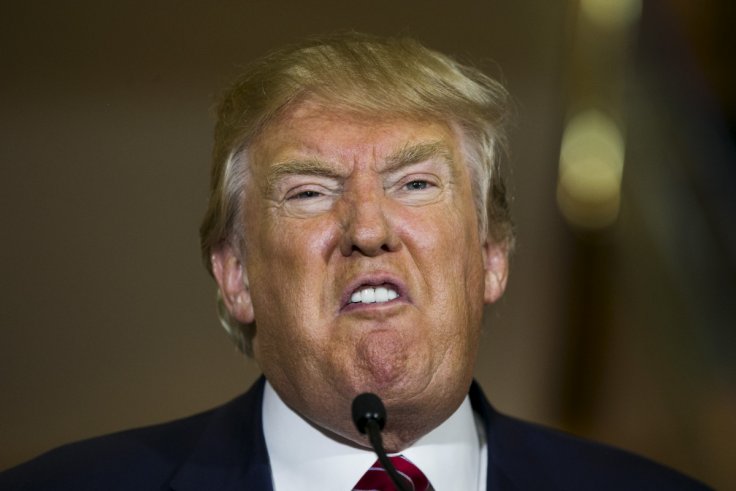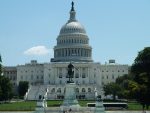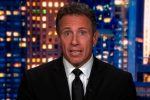Making America Great Again
Everything that President Trump has accomplished, and tried to accomplish, in his first month of office.
By Tyler Fitch, Florida State University
This past fall, America had the unfortunate experience of traversing through another presidential storm, one that was so volatile that it threatened to release upon the country the most terrifying of all creatures—Ted Cruz.
The election created a whirlwind of passionate supporters on both sides, which unfortunately bore out a fear that John Adams spoke of more than three centuries ago. “There is nothing which I dread so much as a division of the republic into two great parties,” he said, “each arranged under its leader, and concerning measures in opposition to each other.”
But really, at this point, what more is there to be said about Donald Trump? We’re all aware of his lewd comments, remarkably thin skin and preposterous projects. The sound of his arrogant voice, one that repeatedly spews tomfoolery, would have Simon & Garfunkel begging for the sound of silence.

To his credit, in the opposite corner of the ring was the Mob Goddess herself, Hillary Clinton. While Clinton could never match Trump’s penchant for enticing the everyman into an overzealous frenzy wherein logic holds no merit, she does bring to bear Michael Corleone’s ruthlessly calculating presence. Let’s make no mistake, Bill should have just looked straight in the camera and said, “I’m sorry, Hilary.” That apology wasn’t for television.
Still, what’s done is done, and now America has four long years of Donald Trump ahead of it. How has he fared so far? Were prognostications of the country’s demise overstated? Will Melania take the kids and run? That’s up to you to decide.
Presented below though, is a chronology of President Trump’s most newsworthy “accomplishments” since taking over one month ago, as well as a brief commentary on each decision’s potential fall-out.
1. January 20, 2017
After being sworn in and appointing key figures, such as James Mattis as secretary of defense and John F. Kerry to secretary of homeland security, Trump demands a halt of Obama’s FHA mortgage insurance premiums, which later leads to the arrests of 217 individuals protesting in Washington, D.C.
The Hot Take
Trump has never been shy when it comes to making big, brash decisions, and maybe his business training will pull the U.S. a fraction out of the $20 trillion debt it is currently in. However, protesting on Inauguration Day, a day meant for the coming together of the nation, is unnerving.
2. January 21, 2017
Four million people around the world attend the Women’s March to send a signal to the Trump administration, 500,000 of whom protest in Washington, D.C. Trump and White House Press Secretary Sean Spicer criticize the media over the alleged attendance.
The Hot Take
It’s not surprising that Trump’s bully tactics and victim mentality encouraged the masses to turn out in such numbers.
What is surprising is how upset the president was at the event’s popularity, hinting at the fragility of his ego, a characteristic that will only become more marked with time.
3. January 23, 2017
Trump meets with twelve CEO’s of major U.S. companies, signs two executive orders and a presidential memorandum on his first full workday in office. He also reaffirms to Egypt that America remains committed to their relationship.
The Hot Take
Aside from another move of questionable morals in extending the olive branch to Egypt, the meeting with a dozen of the major CEO’s is a classic “Apprentice” move, a blustery attempt to get an in with the figureheads of the American economy.
4. January 24, 2017
Trump signs five executive orders, two of which reverse the halt on the Keystone XL and Dakota Access oil pipelines.
The Hot Take
While the plight of Native Americans is often overshadowed, Trump reasons that the expansion of the pipelines will bring money and jobs to America, as well as increased energy independence.
5. January 25, 2017
Trump issues an executive order directing the Department of Homeland Security to begin construction of a wall on the Mexico-United States border, as well as increase the number of border patrol and immigration officers.
The Hot Take
In a move reminiscent of Berlin Wall-era division, Trump took ostensible steps toward realizing what was perhaps his biggest campaign promise.
Unfortunately, it has become clear by this point that Mexico will not finance the project, leaving Republicans scrambling for ways to afford the wall.

6. January 26, 2017
Due to the controversy of President Trump alleging Mexico will pay for the wall in full, and Press Secretary Sean Spicer insinuating that the wall might be funded by a 20 percent tax on imports from Mexico, Mexican President Enrique Peña Nieto cancels Trump’s proposed meeting.
The Hot Take
Any wall between the two countries will push the United States into a deeper state of isolation, a nativism that is beginning to both worry and irritate other countries, many of whom America has had a long diplomatic relationship.
7. January 28, 2017
Trump assembles foreign leaders reaching across all corners of the globe, including Russia’s Vladimir Putin, Germany’s Angela Merkel, Japan’s Shinzo Abe, Australia’s Malcolm Turnbull and France’s François Hollande. He signs three executive orders into fruition, two of which are intended to prevent lobbying, while the other directs his generals to put together a plan within thirty days for defeating ISIS.
The Hot Take
The meeting of leaders from superpowers around the world shows that the prospect of peace is obtainable. The bans against lobbying are noble, if only because the concept of lobbying is what drove politicians to greed in the first place.
8. January 28, 2017
Yes, the same day that Trump was speaking to world leaders via phone call, he signed the “Muslim Ban” into executive law. The ban, which instituted a 120-day opprobrium on refugees entering the U.S., a 90-day ban for most citizens of Libya, Iraq, Iran, Somalia, Sudan and Yemen, and also indefinitely barred any Syrians from entering the U.S., was met with criticism across the world.
The Hot Take
Given its rejection of Syrian refugees, comparisons arose between the Muslim ban, which is denial of entry based on religion, and the exclusion of Jews during the Holocaust. Trump has said that safety for American citizens was his main priority, and has cited terrorist efforts from across the world as reason for requiring the “extreme vetting.”
Supporters of the ban claim that it will prevent terrorists from entering into the country amidst a sea of immigrants from the affected countries. Several terrorist attacks across Europe have been at the hands of displaced peoples, and Trump wants to avoid the same dangers.
However, the prevailing counterargument goes that none of the countries banned have been responsible for terrorist attacks on American soil, insinuating that the vetting process currently in place, which takes several years before letting in refugees, has sufficiently done its job. Furthermore, none of the countries that have sent terrorists to America, such as Egypt and Saudi Arabia, were included in the ban. In other words, if safety was really the president’s motivation, it would have made more sense to exclude known terrorist-producing countries, rather than the seven included.
Ultimately, whatever your position on Trump, the country is staring down four years of melodrama. With only thirty days under his belt, the forty-fifth president has already reconfigured the office, turning the job of “no-drama Obama” into one of chaos and bombast.
Still, as long as he is the president, citizens would do best to stay politically engaged in whatever way they seem fit. On measures where compromise can be reached, constituents should embrace a path that is mutually beneficial, instead of choosing a path of stubborn opposition.

















